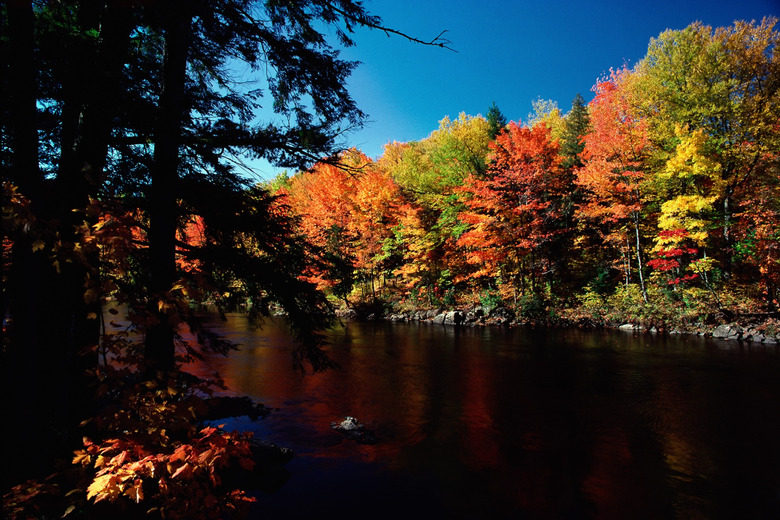Deciduous Forest Biome Facts For Kids
A biome is a particular kind of large ecosystem, or environment of living things. Biomes are described primarily on the basis of their weather, animals and plants. Earth includes about five aquatic (water) biomes and five land (terrestrial) biomes. The deciduous forest biome, also called the temperate forest biome, is familiar to most kids who live in northern North America, most of Europe and the Far East.
Deciduous forest facts can be loosely grouped into information about this biome's locations around the globe, its climate and weather, its flora (or vegetation) and its fauna (or animal life).
Deciduous Forest Locations
Deciduous Forest Locations
Deciduous forests are found in the eastern United States, Canada, Europe, China and Japan. Kinds can be shown on a globe or large map that all of these places are about halfway between the equator and the North Pole. Kids should recognize that there is nothing special about the Northern Hemisphere that allows this; it is merely the lack of land mass south of the equator at the right latitudes that leads to the lack of deciduous forests in this half of Earth.
These forests are also divided into vertical zones, with 100 feet being the ceiling (near the tops of tall trees) and the ground being the floor.
Temperate Forest Facts and Deciduous Climate
Temperate Forest Facts and Deciduous Climate
"Temperate" means mild, and the temperature range for this biome is roughly -30 degrees Celsius to 30 degrees Celsius (about -22F to 86F) with a worldwide average of 10C (50F). This means that temperatures rarely, if ever, get either extremely hot or extremely cold, although winters are more severe at the cooler end than summers are at the warmer end. Again with an eye on the globe, kids can learn why to expect mild temperatures in this biome.
This biome experiences all four seasons (winter, spring, summer and autumn) and a large amount of rainfall (about 30 to 60 inches per year).
Deciduous Forest Plants
Deciduous Forest Plants
Some basic facts about decidous trees and plants for kids is that they include broadleaf trees (oaks, maples and beeches), shrubs, herbs and mosses. Kids can be invited to explain, for example, the Canadian flag on the basis of one of Canada's largest biomes.
"Deciduous" means "shedding," and kids might be taught that "baby teeth" are actually called deciduous teeth by dentists because the body sheds them. It is these trees that are responsible for the beauty fall foliage, because in the autumn, these broad leaves do not get adequate sunlight and begin to die, causing the green chlorophyll to decay into red, yellow and orange.
Deciduous Forest Animals
Deciduous Forest Animals
Animals in this biome cannot be uncomfortable in either very hot or very cold weather, and therefore they must be able to adapt to the changing seasons. They also have to adapt to changes in the food supply and must be able to eat a wide variety of foods. Ask kids to name a type of animal they think is furry enough to live in the winter, but that can also live in the summer and is notable for eating almost anything it finds. (Possible answers include bears and raccoons.)
Cite This Article
MLA
Beck, Kevin. "Deciduous Forest Biome Facts For Kids" sciencing.com, https://www.sciencing.com/deciduous-forest-biome-kids-10046268/. 6 August 2018.
APA
Beck, Kevin. (2018, August 6). Deciduous Forest Biome Facts For Kids. sciencing.com. Retrieved from https://www.sciencing.com/deciduous-forest-biome-kids-10046268/
Chicago
Beck, Kevin. Deciduous Forest Biome Facts For Kids last modified March 24, 2022. https://www.sciencing.com/deciduous-forest-biome-kids-10046268/
